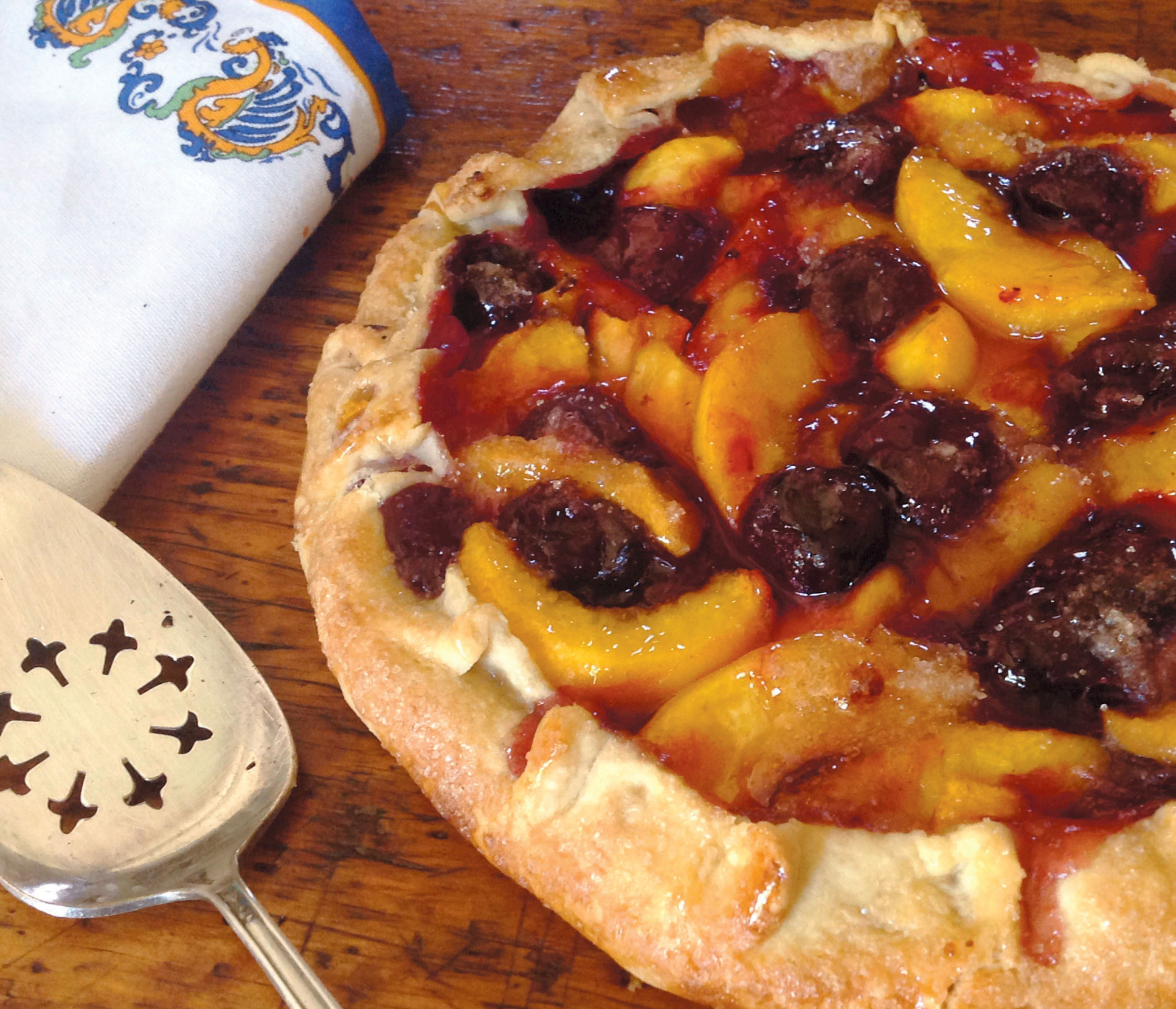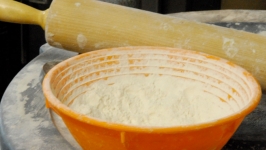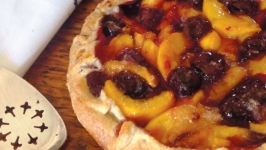It’s as Easy as a Galette
IS IT A FREE-FORM PIE OR A TART?
You’ve heard the phrase “It’s as easy as pie.” But is pie really that easy?
There’s the crust, with its unforgiving butter (too much or not enough) that has to be at just the right temperature to meld into the dough. And what about adding water? Too much or too little? Too dry or too wet? Finally, there’s the rolling of the dough, fitting it in the pan and making sure the filling doesn’t make the bottom crust soggy. This definitely doesn’t sound easy.
Luckily for all of us with pie-making trepidations, there’s the galette. Call it a free-form pie, a rustic tart or simply a delicious fl aky treat, a galette is the perfect pie for the imperfect cook.
FORGET THE PAN
Galettes are free-form so there’s no need for a pie or tart pan. And even though there is pastry involved, the crust is much more forgiving than a traditional pie. Keep a little leftover dough to patch up any tears in the rolled-out dough. And the fi lling? Galette filling is evenly placed in the prepared dough. The result makes a rustic tart that has a filling that cooks faster and more evenly that a traditional pie.
MAKING THE PERFECT IMPERFECT GALETTE
Every good galette (or its Italian cousin the croustade) starts with a great crust. A basic pastry crust can easily be prepared in a food processor. For a dessert galette, add a little sugar to the dough. For savory galette pastry, add a sprinkle of your favorite chopped fresh herbs. If you are going through the process of making homemade dough, why not make enough for two galettes? The raw dough can be frozen in a disk for future use. Just wrap the dough in plastic food wrap followed by aluminum foil. Don’t forget to label it. Just thaw overnight in the fridge and you are literally ready to roll.
Since there is no pie pan involved in galette making, lifting the rolledout dough to a baking sheet pan can be difficult. Make pastry transport easy by rolling it out between two pieces of parchment paper. Remove the top paper and simply lift the rolled out dough, with the bottom piece of parchment paper, to a baking sheet pan. The pastry is now ready to welcome your favorite pie filling.
FOLD AND PLEAT
Put away those pastry crimpers and let your fingers do the pleating. Fold the dough slightly over the filling, and use your fingers to pinch the dough into pleats. The decorative pleated edging creates a barrier that keeps the galette juices in the tart.
AN EDIBLE RECEPTACLE FOR SUMMER FRUIT
Celebrate the fruit bounties of summer by serving a fruit galette for dessert. Let your creative juices flow when picking your fruit filling. Have a favorite fruit pie filling? Use it in a galette. If you pass a cherry orchard, pull over and pick up a few pints of freshly picked cherries. Tart Montmorency cherries work well when combined with a sweeter fruit like peaches or nectarines. If you go for a straight sour cherry tart, just add a sprinkle or two of additional sugar to the mix.
GALETTES ARE NOT JUST FOR DESSERT
When those first tomatoes start to appear, treat yourself to a savory tomato and feta galette finished with snippets of those fresh garden herbs you’ve caringly nurtured in your garden. Those juicy tomatoes can make the bottom pastry a bit soggy. Dust the unfilled galette with bread crumbs before topping with the sliced tomatoes. The crumbs will absorb the tomato juices and keep the finished crust crispy.
Although savory galettes can be prepared with a traditional pastry crust, get even more rustic and make a cornmeal pastry. Add fresh thyme or sage, and you’ll have a crunchy, flavorful dough ready to finish with your favorite savory filling. The cornmeal pastry can be a bit temperamental. Don’t be discouraged if you have a few tears in it during the rolling process. You can easily patch up any imperfections with leftover dough, making the finished galette even more, yes, rustic.
KEEP IT SIMPLE AND FREE FORM
The bottom line in making a galette is to not worry too much. The more irregularly shaped the tart, the more rustic it is. And the fact of the matter is, anything that tastes so good on its own will probably taste even better baked inside the buttery pastry of the versatile galette.







